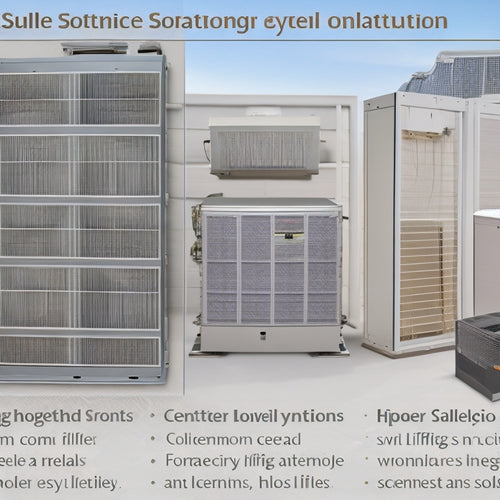
3 Earth-Loving Furniture Tips for Energy-Smart Homes
Share
When furnishing your energy-smart home, you have the power to reduce your carbon footprint greatly by making conscious, eco-friendly choices that not only benefit the planet but also enhance your living space. You can start by embracing a minimalist aesthetic, choosing pieces made from recycled or reclaimed materials, and supporting brands that prioritize ethical sourcing. By incorporating sustainable furniture and design principles, like passive solar design and natural ventilation, you'll not only minimize your carbon footprint but also create a healthier, more energy-efficient living space. As you continue on this eco-friendly expedition, you'll uncover even more innovative ways to harmonize your home with the planet.
Key Takeaways
- Opt for eco-friendly furniture made from recycled or reclaimed materials to minimize waste and reduce carbon footprint.
- Choose minimalist designs that prioritize function over excess, reducing the need for unnecessary materials and energy consumption.
- Select furniture with low VOC emissions to promote healthier living spaces and improve indoor air quality.
- Consider the environmental impact of furniture selection, supporting brands that practice ethical sourcing of materials.
- Incorporate multifunctional pieces to reduce the need for multiple items, ultimately decreasing energy consumption and waste.
Sustainable Furniture Choices Matter
With climate change and environmental degradation pressing heavily on our minds, it's no surprise that eco-conscious homeowners are looking for ways to reduce their carbon footprint.
When it comes to furnishing your home, you have the power to make a positive impact. As we shift to electric vehicles reduced greenhouse gas emissions, we can also make conscious choices in our homes.
Opt for sustainable furniture choices that not only benefit the environment but also reflect your personal style. Welcome minimalist aesthetics that prioritize function over excess, and choose pieces made from recycled or reclaimed materials.
Look for brands that prioritize ethical sourcing, ensuring that their materials are harvested responsibly.
Energy-Efficient Design Principles
As you design your energy-smart home, incorporating energy-efficient design principles can greatly reduce your energy consumption and carbon footprint.
By applying passive solar design, you can utilize natural light and heat, reducing the need for artificial lighting and heating. This means carefully orienting your home to maximize sunlight during winter and shade during summer.
In addition, adopting eco-friendly habits, such as reducing carbon footprint, can considerably lower emissions.
Natural ventilation is another key principle, allowing you to reduce cooling costs by leveraging wind direction and window placement.
Eco-Friendly Materials to Consider
Five key areas to focus on when selecting eco-friendly materials for your energy-smart home are sustainable sourcing, low embodied energy, recycled content, low VOC emissions, and end-of-life recyclability.
You'll want to investigate materials that not only reduce your carbon footprint but also promote a healthier living space.
Consider adopting renewable energy integration principles in your material selection, as it can greatly decrease reliance on fossil fuels and promote sustainable practices.
Additionally, streamlining logistics in material sourcing can minimize fuel consumption and lower emissions.
Consider bamboo alternatives, like rattan or wicker, for a sustainable twist on traditional wood furniture.
Recycled plastics, repurposed into durable and stylish pieces, are another great option.
When shopping, look for certifications like FSC or Oeko-Tex, which guarantee the materials meet rigorous eco-standards.
Frequently Asked Questions
Can I Repurpose Old Furniture to Make It Energy-Efficient?
You wonder if you can breathe new life into that old furniture, making it energy-efficient and eco-friendly. Yes, you can! Investigate repurposing techniques and incorporate sustainable materials to give your furniture a green makeover, freeing you from waste and guilt.
How Do I Measure the Energy Efficiency of My Furniture?
You're taking the next step towards an eco-friendly home! To measure furniture energy efficiency, look for pieces made from sustainable materials and check if they provide thermal insulation. Research certifications like Energy Star or eco-labels to ascertain you're making a green choice.
Are Energy-Efficient Furniture Options More Expensive?
You're wondering if energy-efficient furniture options break the bank? While they might cost more upfront, you'll reap long-term savings through reduced energy bills, making the investment worthwhile in the long run.
Can I DIY My Own Eco-Friendly Furniture at Home?
You're a DIY rockstar, capable of crafting an entire eco-friendly empire from scratch! With sustainable materials and clever DIY techniques, you can whip up your own eco-conscious furniture, saving the planet (and your wallet) in the process!
Are There Any Energy-Efficient Furniture Certifications to Look For?
When shopping for eco-friendly furniture, you'll want to look for certifications like FSC, Oeko-Tex, and Greenguard Gold, which guarantee sustainable materials and eco-friendly design, giving you peace of mind and a clear conscience in your freedom-filled home.
Related Posts
-

Why Solar HVAC Filters Revolutionize Home Energy Efficiency
By adopting solar HVAC filters, you're shifting your home's energy reliance from fossil fuels to clean, renewable sou...
-

Why Choose Cool Roofs in Scorching Climates?
You opt for cool roofs in scorching climates because they enable you to reclaim control over your energy consumption ...
-

Why Choose Solar Composting Toilets for Your Home?
By choosing a solar composting toilet for your home, you'll greatly reduce your environmental impact, slashing your w...


